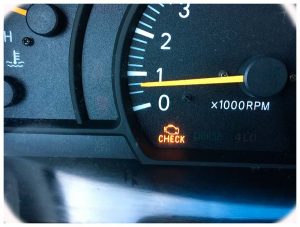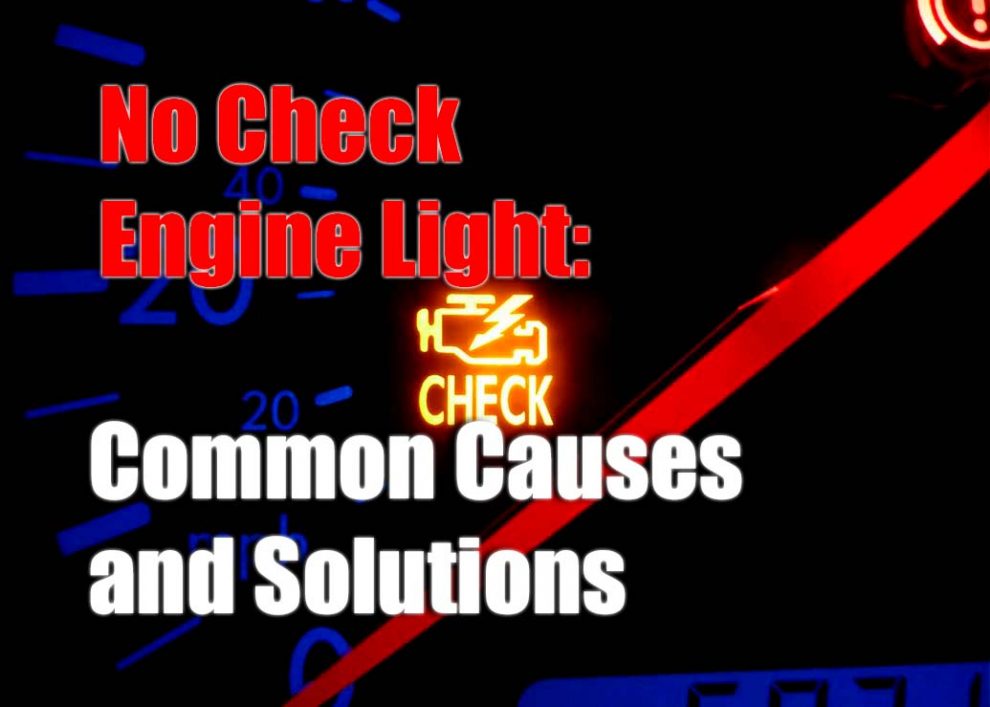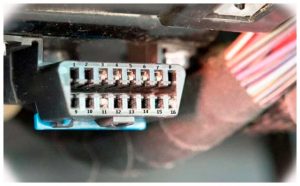In today’s increasingly complex vehicles, the check engine light is important in alerting drivers to potential vehicle issues. Unfortunately, many drivers need to learn the check engine light and why it is so important for their vehicle. With this article, we’ll go over what a check engine light is, why it’s essential to diagnose any problems that are indicated by the light, and some common causes and solutions for when the check engine light doesn’t turn on.
What Is a Check Engine Light?

Why Is the Check Engine Light Important?
The check engine light is an important indicator because it can alert you to potential problems with your vehicle before they become more serious or expensive to repair. For example, if the CEL illuminates due to a faulty spark plug, then quickly replacing the spark plug can prevent more serious damage. It can also help mechanics diagnose the issue faster and fix it sooner. Also read about ‘what causes engine misfire‘ to understand other potential issues that may trigger your check engine light, enabling you to address them promptly.
What Does It Mean When There’s No Check Engine Light?
When there is no check engine light illuminated, it could mean one of several things. The most likely explanation is that something has caused the CEL not to turn on as expected, such as a blown fuse, faulty check engine light bulb, OBD-II connector issues, or engine control module (ECM) issues. It could also be due to software or sensor issues preventing the CEL from turning on correctly.
Common Causes of No Check Engine Light
-
Blown Fuse: A blown fuse can prevent the check engine light from illuminating properly when there is an issue with your vehicle. This can be caused by excessive current draw on circuits within your car due to a fault in another component or system, such as a short circuit in your alternator, or excessive current draw from accessories such as a car stereo.
-
Faulty Check Engine Light Bulb: The CEL is typically illuminated by a small light bulb, which can become faulty due to normal wear and tear. This can cause the check engine light not to illuminate when it should, preventing you from being alerted to potential problems with your vehicle.
-
OBD-II Connector Issues: OBD-II (On-Board Diagnostics) connectors provide a connection between the vehicles on board computer system and various sensors throughout the car. If there is an issue with the connector itself, then it can prevent the check engine light from illuminating properly when there is an issue with your vehicle.
-
Engine Control Module (ECM) Issues: The ECM is responsible for controlling many of the systems of your vehicle, including its emissions control system, fuel injection system, and other related systems. If there is an issue with the ECM, it can prevent the CEL from turning on correctly when there are issues within any of these systems.
-
Software or Sensor Issues: Software problems or faulty sensors within your vehicle’s systems can also cause the check engine light not to turn on as expected. This could be due to a faulty sensor or a software issue preventing the CEL from turning on correctly.
How to Troubleshoot a Missing Check Engine Light
-
Check the Fuse: The first thing you should do when troubleshooting a missing check engine light checks the fuse box for blown fuses. If there are any blown fuses, then they need to be replaced before the CEL will turn on as expected.
-
Check the Check Engine Light Bulb: If the fuse does not cause your missing check engine light, then you should check the CEL bulb itself. This can be done by carefully inspecting it for signs of damage or corrosion and replacing it if necessary.
-
Check the OBD-II Connector: The next step in troubleshooting is to check your vehicle’s OBD-II connector for any signs of damage or corrosion and replace it if necessary. This will ensure that your vehicle has an appropriate connection with its computer system and sensors so that any issues can be appropriately detected by your vehicle’s systems, including its emissions control system.
-
Check the Engine Control Module (ECM): If you have checked all of the components above and still cannot find the cause of the missing check engine light, then you should next check the ECM for any signs of damage or corrosion. If there is an issue with the ECM, it could prevent the CEL from turning on correctly.
-
Check for Software or Sensor Issues: Finally, if all of the components listed above have been checked and are in working order, then you should check for any software issues or faulty sensors that may be preventing the CEL from turning on correctly. A professional scan tool can often do this through your vehicle’s OBD-II port.
Conclusion
When your check engine light does not turn on as expected, it’s important to identify and diagnose the cause to fix it quickly and safely. In this article, we discussed what a check engine light is, why it’s important, and some common causes of a missing one, such as blown fuses, faulty bulbs, OBD-II connector issues, ECM issues, and software or sensor issues. We also provided tips on troubleshooting these types of problems if you find yourself in this situation.


 Check the OBD-II Connector: The next step in troubleshooting is to check your vehicle’s OBD-II connector for any signs of damage or corrosion and replace it if necessary. This will ensure that your vehicle has an appropriate connection with its computer system and sensors so that any issues can be appropriately detected by your vehicle’s systems, including its emissions control system.
Check the OBD-II Connector: The next step in troubleshooting is to check your vehicle’s OBD-II connector for any signs of damage or corrosion and replace it if necessary. This will ensure that your vehicle has an appropriate connection with its computer system and sensors so that any issues can be appropriately detected by your vehicle’s systems, including its emissions control system.
Add Comment